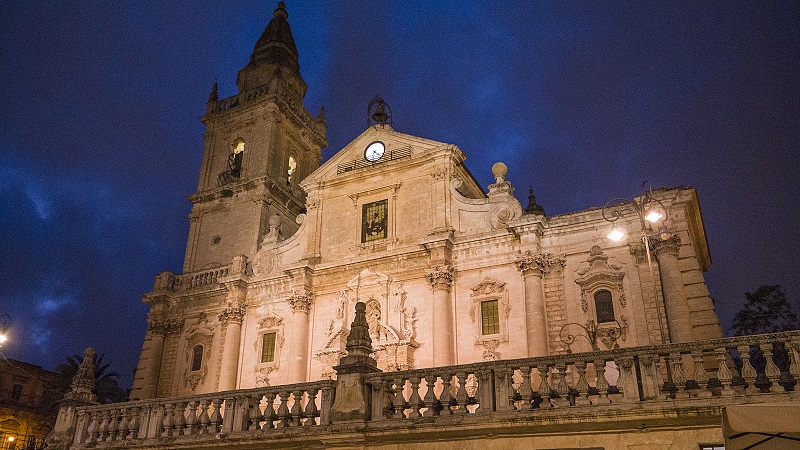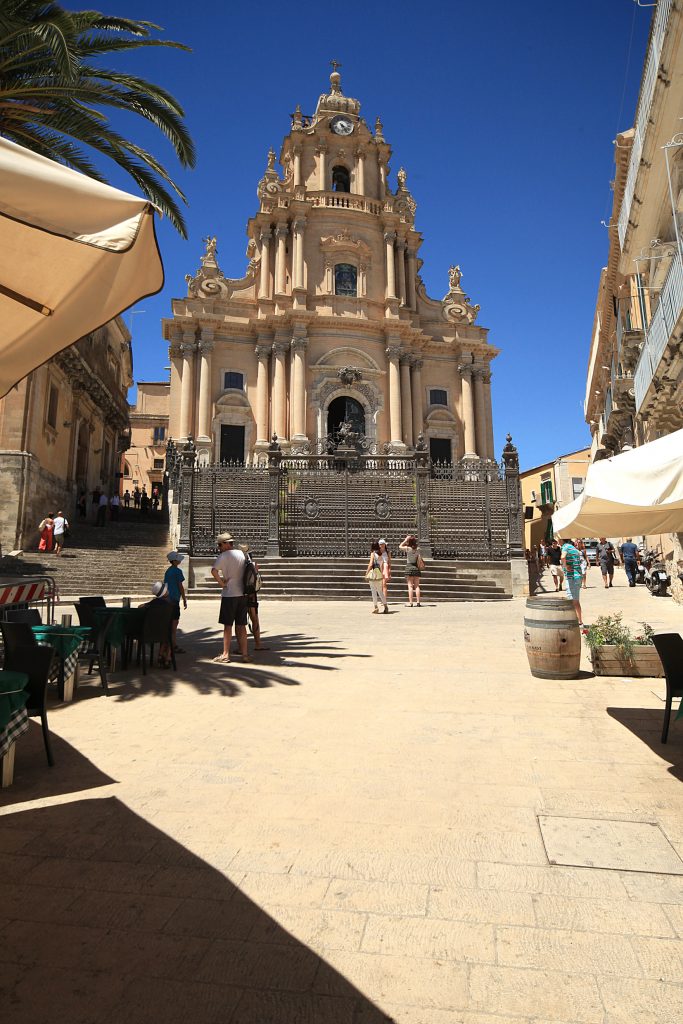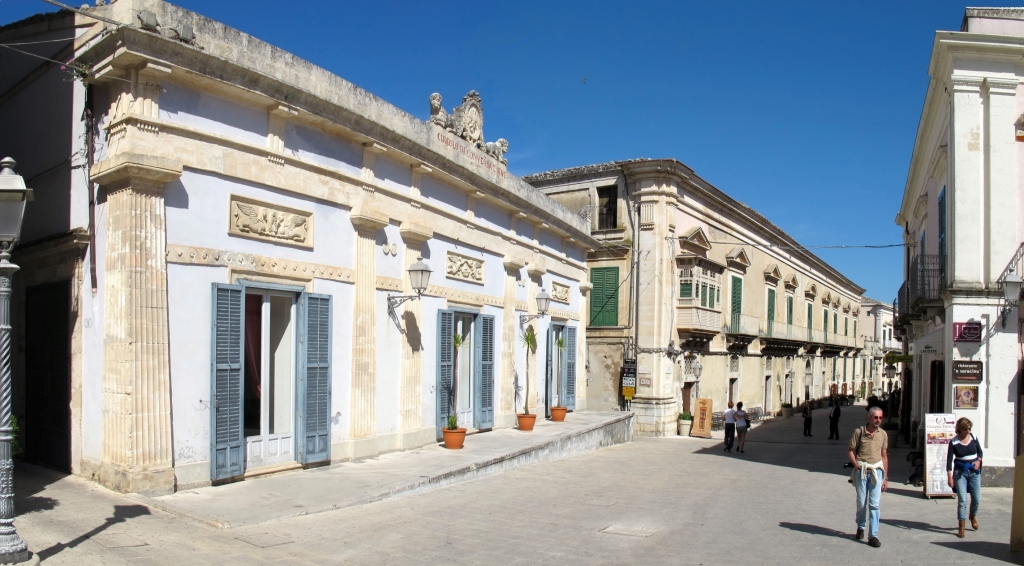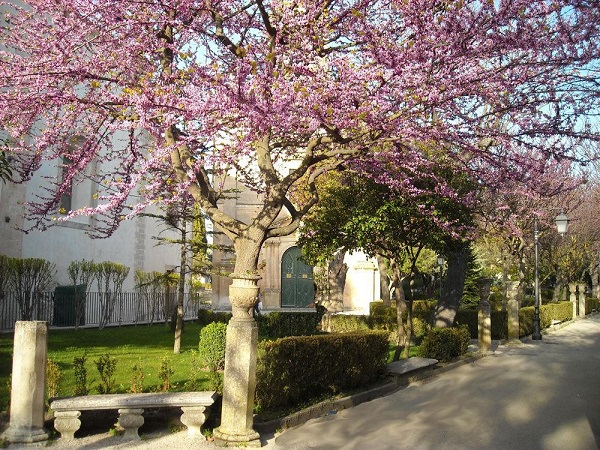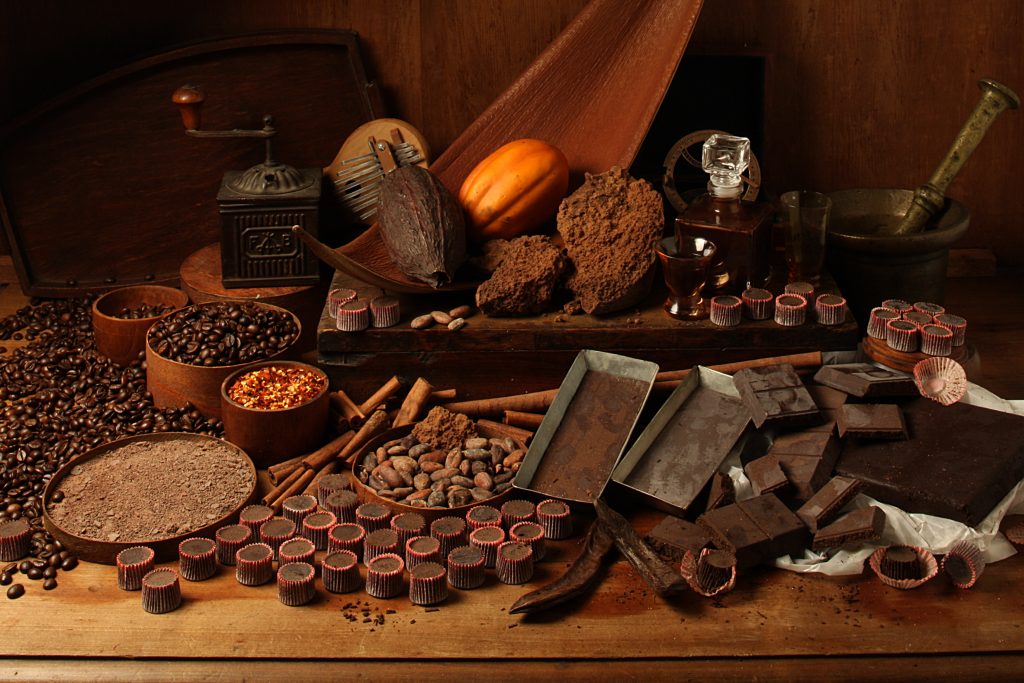Ragusa is a city with two souls. It has a modern area and an ancient, Baroque-style area called Ibla. Ragusa has the refined elegance that characterises the late-baroque towns of the Val di Noto. It attracts visitors to its maze of narrow streets, where there are many churches and palaces to visit. All around, an ethereal beauty creates a magical atmosphere: it is almost impossible to leave.
Here are 10 things to do in Ragusa!
- Visit the Ibleo Regional Archaeological Museum
Ragusa Superiore is the most recent part of the town. However, the Museo Archeologico Regionale Ibleo is in this area, inside the Palazzo Mediterraneo in Via Natalelli. The museum preserves and tells the story of the ancient city of Kamarina, from its prehistoric origins to the late Roman age.
Find out more about Museo Archeologico Regionale Ibleo audio tour izi.TRAVEL
- The Cathedral of St John the Baptist
In the upper part of Ragusa, the imposing Cathedral of St John the Baptist is well worth a visit. It stands at the junction of the two main avenues, Via Roma and Corso Italia. Next to the large façade is the high bell tower and, on the front of the church, is a large roof terrace.
- All stairs lead to … Ibla
Let us now descend to Ragusa Inferiore. This area has characteristics that make it unique in the world. Local stone is widely used in local structures; churches and palaces have a baroque style. All the architectural masterpieces built after the earthquake and those in the Val di Noto were declared UNESCO World Heritage Sites in 2002.
Continue along Corso Italia to Corso Mazzini. The city is divided into two large districts joined by a winding path. You can also enter Ibla by crossing three bridges, the Vecchio (or Cappuccini), Nuovo and Giovanni XXIII, or descending a staircase of hundreds of steps. How can you resist this picturesque and inviting opportunity?- Tour of the Churches
Ragusa Ibla has at least 50 baroque churches. Let’s take a look at them.
Between the “two Raguses”, we can see the Church of Santa Maria delle Scale. The Church was rebuilt after 1693 and preserves some elements of the old layout inside. You can still see the three Catalan Gothic portals in the right-hand nave and another door with refined and elegant Renaissance forms.
We proceed towards Piazza Della Repubblica, dominated by the Chiesa del Purgatorio with its beautiful Baroque portal.
Heading up the Commendatore hill, we can see other two historical palaces in Baroque style: Palazzo Cosentini and the 18th-century Palazzo Della Cancelleria.
The majestic Church of Santa Maria dell’Itria, is tucked between narrow alleyways. The Knights of Malta founded it in the 17th century, and the bell tower dates back to that period. The dome is covered with Caltagirone ceramics. Its intense blue colour makes it stand out against the softer shades of the surrounding roofs and buildings.
- Cathedral of San Giorgio
From Via del Mercato, but also through parallel streets, we finally arrive in front of the Church of San Giorgio, the Cathedral of Ibla. The dramatic façade has three levels of superimposed columns. Inside the Church, there’s a nave and two aisles divided by solid pillars.
Looking over Piazza Duomo, we notice the whiteness of the stone, contrasting with an incredibly blue sky. Here we can enjoy a tasty and refreshing break. Sitting at a table in a bar, we order a delicious granita.
- Circolo di Conversazione (Conversation Club)
From Piazza Duomo, we cross the pedestrian area to stop at the Circolo di Conversazione. If you think you have seen it somewhere before, you are definitely a fan of the Commissario Montalbano TV series. We can see the hall from the outside and imagine this place crowded as it was in the past. Here, the erudite local bourgeoisie discussed “with the ambition of having the solution to everything” (as Gesualdo Bufalino wrote).
- Hyblaean Garden
It’s now time to take some rest. We can relax in the wonderful Hyblean Garden. Let’s enjoy a pleasant stroll through it, admiring the views. In the garden, we can see the imposing monument to the fallen of the Great War and the churches of San Vincenzo Ferreri, San Giacomo and the Church of the Capuchins.
Near the green area, have been discovered many finds of the ancient Hybla. It is possible to see them visiting the archaeological excavations of Ragusa Ibla.- Castle of Donnafugata
The Castle of Donnafugata is among the most elegant castles in Sicily. It takes its name from the princess Bianca di Navarra, the protagonist of a famous legend. The princess was imprisoned in the manor by Count Bernardo Cabrera but escaped through tunnels leading into the surrounding countryside. Around the castle today stands a lush park of almost 8 hectares with large Ficus trees and other exotic essences.
Inside the castle, we visit the Coat of Arms Hall. The frescoes on the walls represent the noble crests of the great Sicilian families. We will be amazed by the enchanting beauty of the hall of mirrors, the music room and the billiard room. Don’t miss to visit the charming bedroom of the Princess of Navarra. All the rooms, the halls and the hallways are plenty of beautiful stucco and frescoes. A true masterpiece!- A food and wine journey through the Ragusa area
We begin by tasting pastieri, small pastries made of minced lamb and goat meat, seasoned with pepper, cheese and eggs, typical of the Modica area. We continue with scacce, thin dough sheets, stuffed with spinach or broccoli and ricotta, sausage and ricotta or even tomato and aubergine. These specialities are also called impanate during Easter.
We can taste rabbit a partuisa, chickpeas cooked with pork. Typical of Ragusa is also a puree of broad beans called macco. Not to be missed is the caciocavallo, a cow’s milk cheese. It has a parallelepiped shape, and its name comes from the particular position where it was placed to mature.
It is impossible not to mention the chocolate of Modica, one of the best for its particular and ancient processing.
Then there are the affucaparrinu biscuits, literally priest-strangler. They are sweets made with almonds, such as nougat and macaroons, which are also delicious. The mpanatiggi, in addition to almonds, contain chocolate, veal fillet and various spices.We enjoy everything with a fine local wine, choosing between Cerasuolo di Vittoria, Ambrato di Comiso, and Albanello.
- Ragusa and its surroundings
If we plan to extend our holiday in Ragusa, the itinerary that takes us around the Ragusa area will show us many wonderful destinations.
Modica, Ispica and Scicli are have been awarded among “ I Borghi più Belli D’Italia” (the most beautiful villages in Italy) ; Noto is the capital of Baroque in Sicily; Marina di Ragusa, Acate, Chiaramonte Gulfi, Comiso; the island of Correnti in Portopalo di Capopassero, Avola; not to mention the wonderful beaches (among the most beautiful in Sicily) of Sampieri, Puntasecca, Scoglitti, Puntasecca, Marina di Modica.
Find out more about Ragusa UNESCO heritage audio tour izi.TRAVEL

